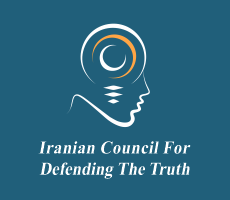There is no doubt that we are already experiencing fundamental shifts in warfare that are the consequence of innovations in weaponry, tactics, and the nature of war-generating conflict configurations. On one level the role of automation and digital networking have given states new options to engage in combat without a major commitment to conventional patterns of warfare, including the possession of weaponry. At the same time, non-state actors have increased their access to weapons such as drones and have become more sophisticated with respect to tactics and political agendas.
War planners in strategic think tanks and within military/intelligence sectors of government is the rise of what is being called ‘hybrid war,’ which is meant to cover the adoption by states of techniques of irregular warfare, and to some extent the reverse tendencies of non-state movement to have recourse to conventional weaponry, including missiles and drones.
In the background are a number of factors that have made conventional war a poor option to resolve conflicts between major states: (1) fears that violent encounters between states would escalate, resulting in the disastrous uses of nuclear weapons; such fears inducing caution; (2) rise of nationalist self-confidence producing popular mobilizations of resistance to imperial interventions, leading to political defeats for the intervening side militarily despite its battlefield superiority in a series of anti-colonial wars.
(3) Chinese example of spectacular economic growth, socio-economic progress, and enhanced international stature without significant reliance on the exertion of military leverage in its overseas operations; (4) decline of Western influence, especially the United States, perceived as connected with its over-reliance on conventional military doctrine, producing a series of political defeats and the weakening of morale and draining of resources in ‘forever wars.’
These developments have led both states and non-state actors to reconsider their relationship to political violence as a tool to achieve their goals. It has led states to seek ways of destabilizing, punishing, and inhibiting adversaries without relying on battlefield confrontations. Hence, the reliance on sanctions, covert actions of destabilization and sabotage, cyber disruptions, political assassinations, drone attacks. For non-state political actors this has meant identifying and targeting vulnerabilities in adversary countries.
Illustrative of this ‘learning’ have been terrorist attacks on symbolic embodiments of the established order as in the Al Qaeda 9/11 attacks against the World Trade Center and Pentagon in 2001. Perhaps, more clarifying is the discovery that prolonged nationalist resistance leads to ‘intervention fatigue’ on the part of the intervening state, which prompts military withdrawal as with Vietnam, Iraq, and most recently, Afghanistan. The ‘patience’ of the national resistance force may subject the civilian population to prolonged suffering, but it does often in recent decades produce an eventual victorious outcome for the weaker side, and now even a pledge by the American president to end participation in such ‘forever wars.’
Cognitive warfare is a more recent term calling attention to the manipulation and use of information with the goal of changing the opinions of targeted individuals and societies, including even the way they think, and hence their behavior. It stresses the role of such technical avenues of control as surveillance through meta-data collections, social messaging, polarizing societies, influencing elections, as well as shaping consumer and investment behavior.
Hybrid warfare is a more comprehensive term that refer to the conscious interrelationships between conventional warfare and both irregular or asymmetric warfare and cognitive warfare. In other words, depending on the context of conflict it seeks to achieve strategic results by blending techniques associated with various kinds of warfare and differentiating tactics. Russian hacking of American social networks to exert influence in the 2016 US elections is a perfect example of seeking to dissuade American voters from supporting an anti-Russian candidate (Hillary Clinton) without seriously risking a military confrontation that could possibly escalaate beyond the nuclear threshold.

